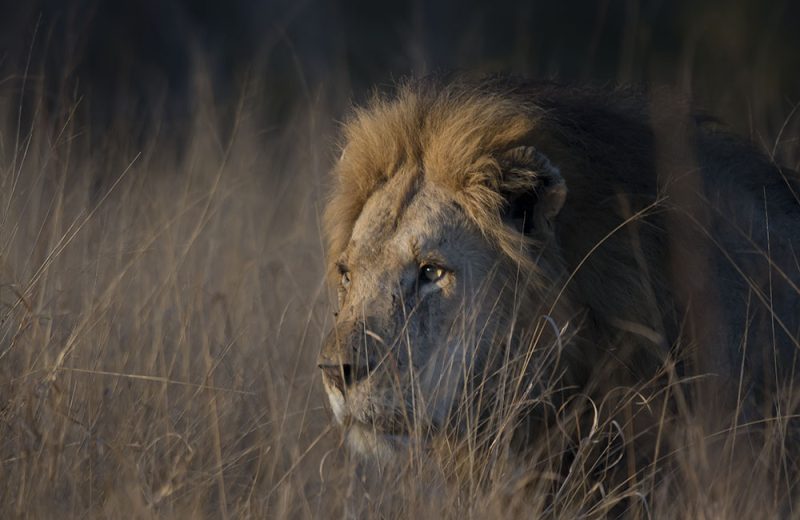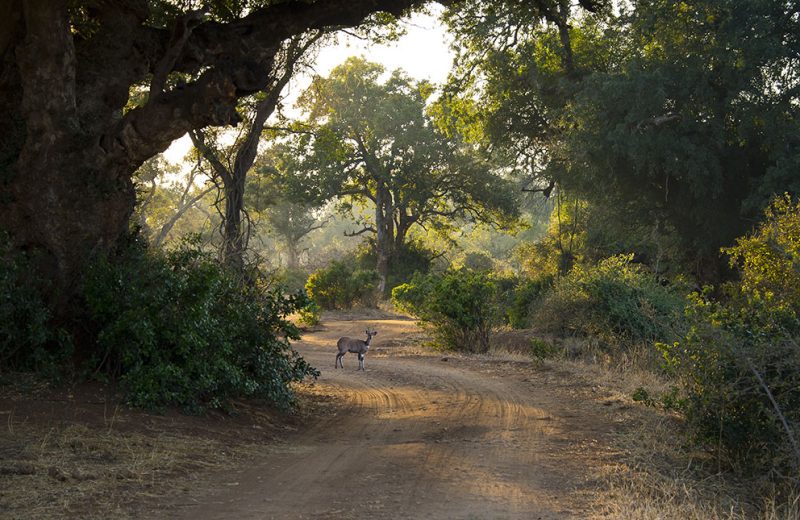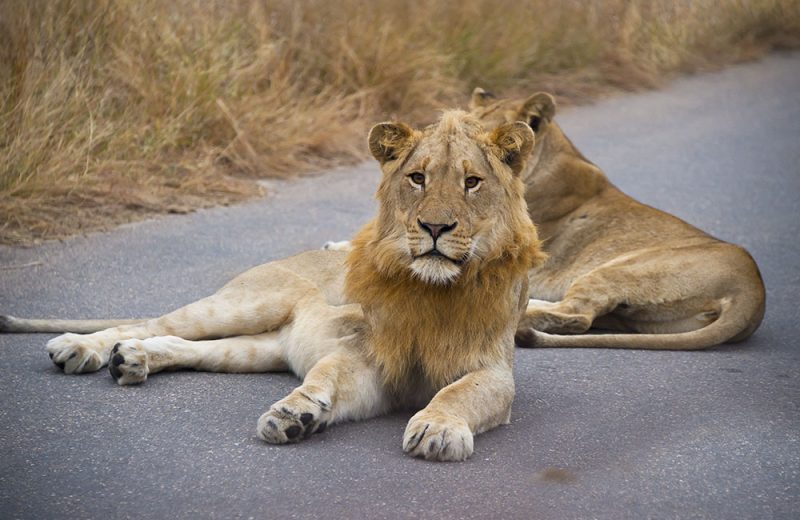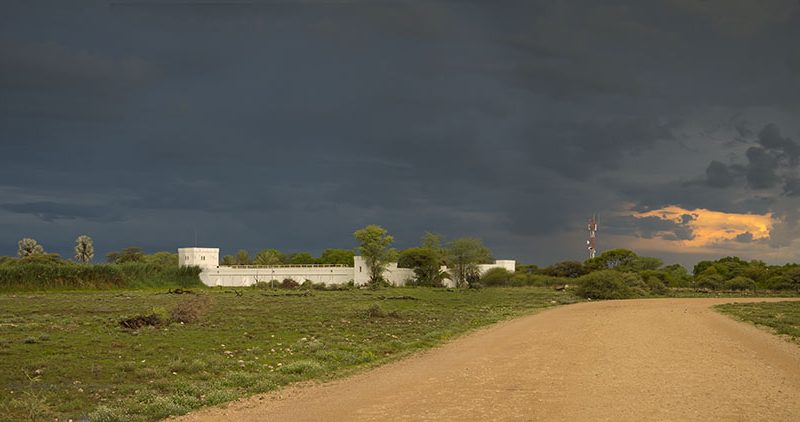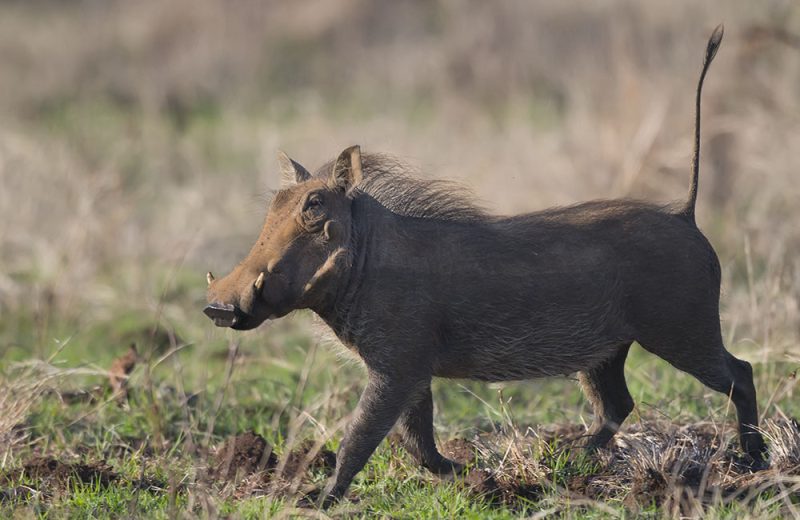Friday, 19th (contd) This afternoon we go out again along the H10 road towards Muntshe and Mlondozi. With the golden setting sun to the west and the straw coloured grass, this is a particularly pleasant afternoon drive. We have often seen lions, leopards and cheetah along this road, but besides the usual small birds, nothing much is about today. Our trip home is enlivened by a group of warthog in the road ahead.
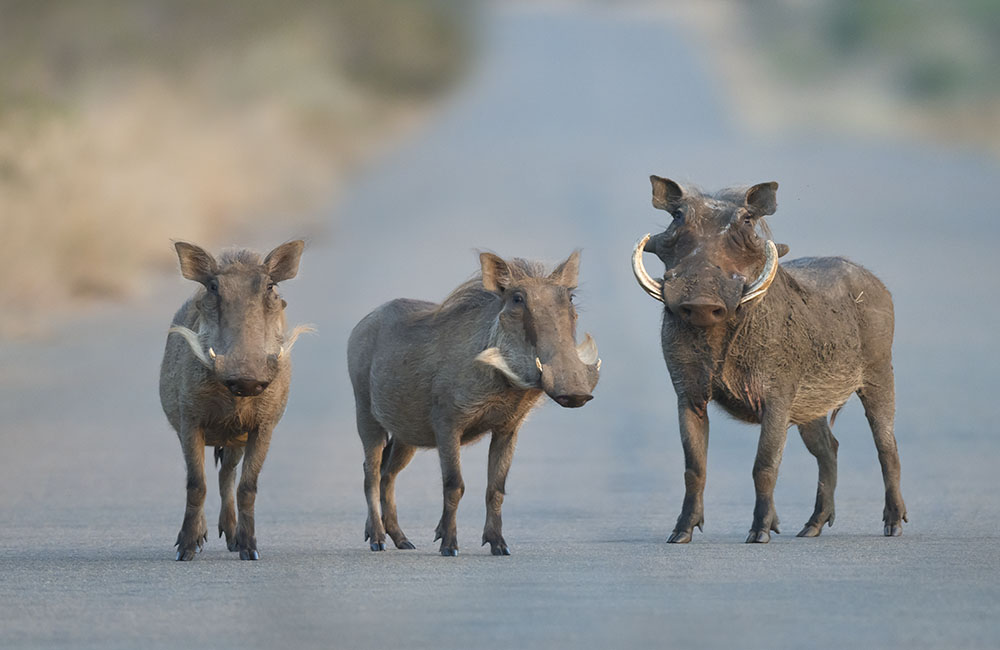
 Saturday, 20th A really enjoyable early morning option from our base at Lower Sabie is the narrow track (S122) that runs behind Muntshe mountain. We set off in the dark at 6am and travel rapidly along the H10 to the northern end of Muntshe where we turn onto the track.
Saturday, 20th A really enjoyable early morning option from our base at Lower Sabie is the narrow track (S122) that runs behind Muntshe mountain. We set off in the dark at 6am and travel rapidly along the H10 to the northern end of Muntshe where we turn onto the track.
This road is very quiet and one seldom comes across other cars along it. It runs through typical basalt grasslands of eastern Kruger so favoured by cheetah, lion and servals. Together with the grassland birds we always find this area full of interest and today is no different.





At the end of the road we turn right and make for Mlondozi dam and its delightful lookout/picnic spot perched on a hillside.



 Here we find clusters of tourists gazing out over the plains at some lions that are stalking some waterbuck. What a beautiful view one has of the vast expanse of Kruger stretching away as far as the eye can see in all directions.
Here we find clusters of tourists gazing out over the plains at some lions that are stalking some waterbuck. What a beautiful view one has of the vast expanse of Kruger stretching away as far as the eye can see in all directions.

Coming home I am delighted to find a pair of Stonechats along the S29. They are such beautiful little birds and quite difficult to photograph.


This afternoon we set out to explore the extent of the burnt veld down Duke way. We find that the whole block within the roads H4-2, S28, S137 and S130 is a blackened wasteland so future drives must be planned accordingly. The Nthandanyathi Hide though is clean and functional and with a good amount of water in front of it, the prospects of a pleasant morning spent there are good. Nearby I find a pair of Burchell’s Coucals after I was alerted by their lovely bubbling call.

Sunday, 21st When we leave camp at 6am the sky is cloudy making it particularly dark to begin with. We head up the Sabie river road (H4-1) to an old favourite – the Nwatimhiri S21 road that leads out westward. We stop at the little pond along the way which still has a small puddle of water and a pair of Wooly-necked Storks feeding in the mud.

Moving on west and after about 15km travelled, we realise that the road is just too badly corrugated to enjoy a peaceful morning. With a number of cars overtaking us, we rightly decide to turn around and make it back to the main tarred H4-1 road.
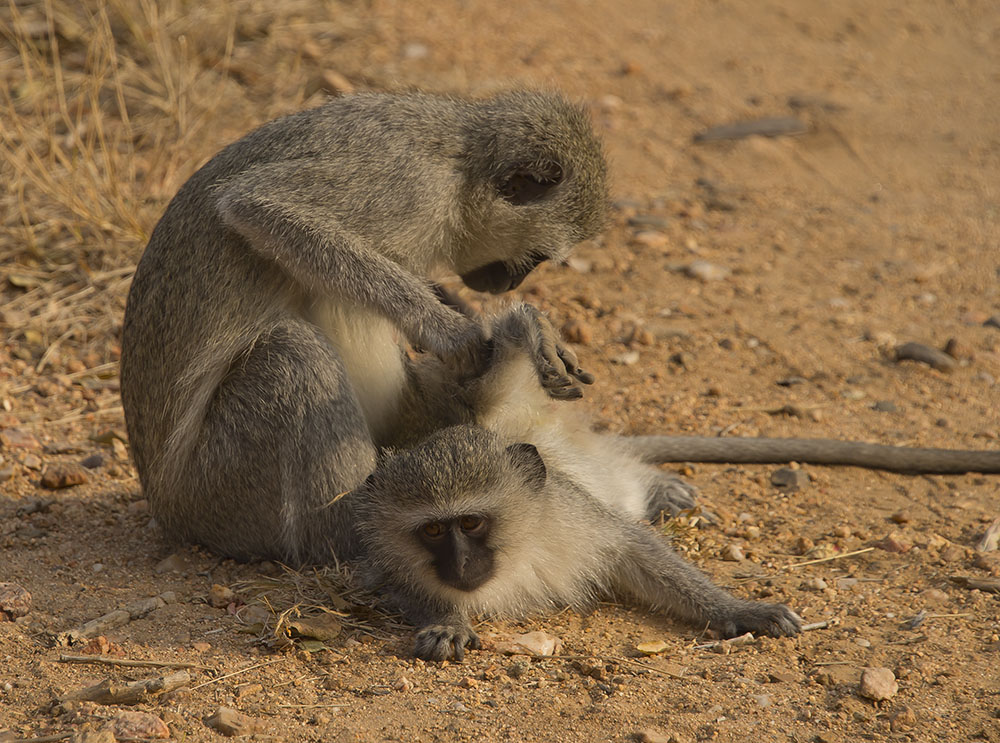
The Skukuza – Lower Sabie (H4-1) road might suffer from heavy traffic but the beauty of the road and the more prolific bird and animal life, sometimes make it preferable. After the rattling and jarring of the S21, we enjoy a quiet run to the Nkuhlu Picnic Site along the tar, and the traffic is not too bad. We note that the Nwatimhiri Causeway Loop (S79) is still closed because of flood damage in February last year. Kruger fans will understand that one does not have to see spectacular sights to make an early morning drive thoroughly enjoyable. The great riverine trees, the river and the bushveld itself, all bathed in early morning light makes these hours so inspiringly special.
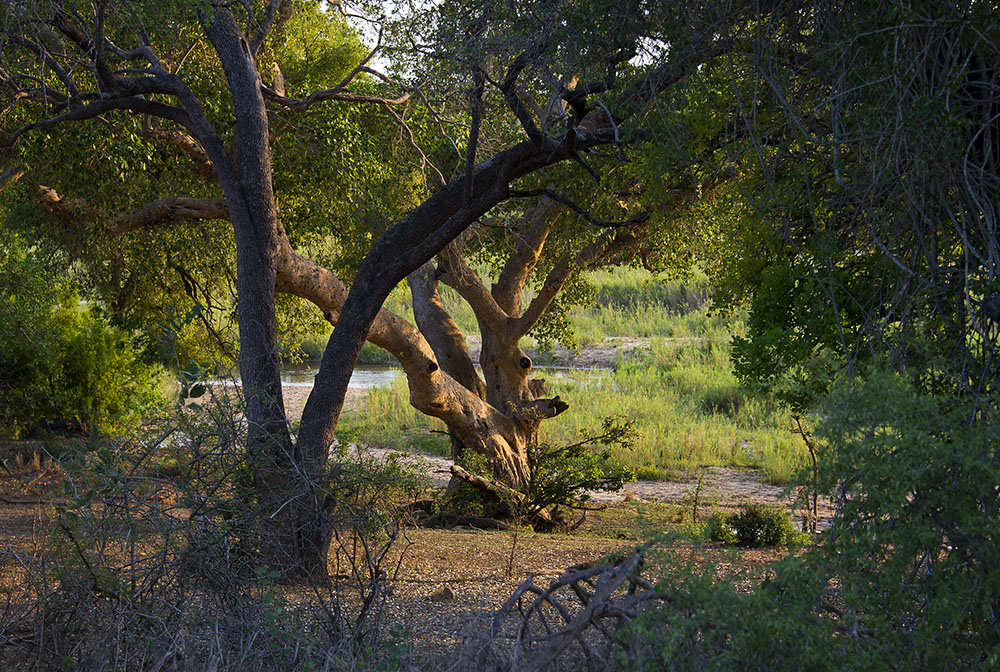
And of course there is always the possibility of something very spectacular.
Back in camp I visit again the aloes and the sunbirds.

A light south wind has kept the weather cooler these past two days at about 25ºC. This afternoon we again travel out towards Muntshe seeing nothing noteworthy.

This evening the camp is murmuring with discontent as a water main has burst leaving the whole camp without water. Fortunately, our onboard water tank in the caravan is full and we can still enjoy a hot shower. I do confess that our days of roughing it whilst camping are long past and we do enjoy the comforts that our splendid caravan provides.
Monday, 22nd As is normal at this time of the year, the game is concentrated along the rivers and following yesterday’s trying Nwatimhiri experience, we decide to stay on the Sabie River road (H4-1). So we exit the camp soon after 6am and first stop at Sunset Dam to watch what is actually a Moonset.

Thereafter we travel slowly up the road.

This road is excellent for birds.


Approaching the high-level bridge over the Sabie River, Renette brilliantly spots an African Harrier Hawk (Gymnogene) that is busy hunting. These rather eccentric birds have a rather unique way of working their way over a tree looking in holes and crevices for nests and lizards. This is always accompanied by much flapping and hanging on upside down. I was most fortunate to be able to photograph this behaviour.



At the high-level bridge H13, Renette spies a Cape Clawless Otter in the water but by the time I have turned the vehicle it has disappeared.
Some trivia. An app on my phone tells me that the elevation of the river at Lower Sabie is about 160m asl whereas at the high-level bridge it is about 225m asl. Thus over the 25Km from the bridge the river drops about 60m on its way to Lower Sabie.
We seem to be having a bit of bad luck with the cats. On a number of occasions we come across cars that have just seen lions or leopards which have just disappeared. But there is much else to keep our interest.



We return to Lower Sabie well satisfied after a busy and stimulating morning. At lunchtime, Warren (our fourth son) joins us from Jo’burg and he will be camping with us for three days. Maybe we need some young eyes.



